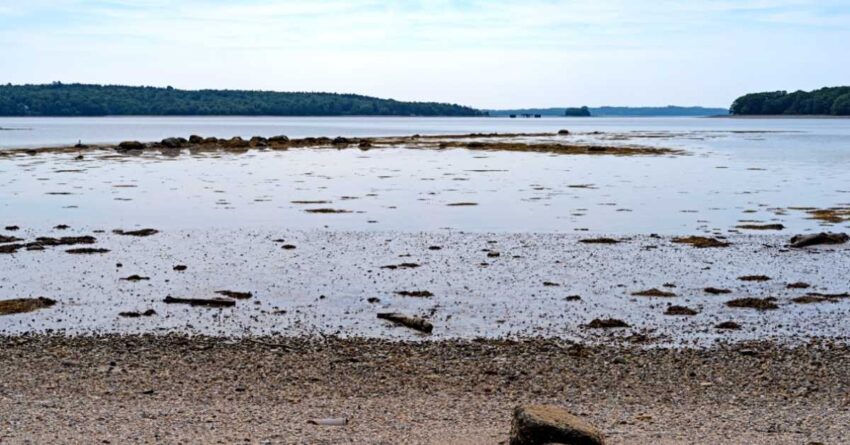Woman Explains What Being Swallowed by Quicksand Really Felt Like

A Maine woman has lived to tell the tale after being sucked waist-deep into quicksand on a popular beach. Thankfully she was with her husband, who was able to successfully pull her to freedom, and now she’s recalling the scary incident.
Jamie Acord had been walking along Popham Beach State Park in Phippsburg, ME with her husband when the scary incident occurred on Saturday, June 1. The state park beach is the busiest in Maine, drawing over 225,000 visitors per year. She tells People that “literally, it was kind of like I just dropped into a manhole cover.”
“We’re walking along, just talking, and all of a sudden I went into the sand,” Acord recalled. “It was kind of one of those moments where I didn’t know what to do. This is a new thing that’s never happened before,” Acord noted that she normally goes to that beach all of the time without incident.
“And as soon as he pulled me out, we turned around to look to see what had occurred because we just assumed I’d fallen in an actual hole and there was nothing there,” she continued. “It looked just like the beach. It had filled itself right back in.”
After being freed from the quicksand, Acord says that her clothes were covered in “wet-cement-like sand.” She later posted about her brief but harrowing ordeal on social media to warn others, particularly residents who visit the beach alone at off-hours.
“If the beach is clearing out, there’s only one or two people on the beach and you fall in something like that and you don’t know what to do or you can’t get out, you’re kind of stuck,” she added.
Jim Britt, a spokesperson for the Maine Department of Agriculture, Conservation and Forestry, told the Associated Press that despite common misconceptions, people don’t actually sink in quicksand, and are usually able to float and wriggle out of it.
“People hear the word quicksand they think jungle movie,” he said. “The reality with this supersaturated sand is you’re not going to go under.”
Britt says that the quicksand incident was likely a result of climate change after a series of winter storms rerouted a river that pours into the ocean, causing the sand to soften in areas where visitors tend to walk. Park staff has since placed signs in the area to warn others of the danger.
Last year, a man died after becoming stuck waist-deep in the deadly mud flats of Alaska’s Turnagain Arm, drowning with the incoming tide. Mud flats are similar to quicksand in the way the surface appears to be solid, however, when the tide comes in, the silt gets wet from the bottom and then loosens up to create a vacuum. Those unsuspecting enough to walk on it can become quickly sucked in, and the real threat is the rapidly-rising tides.
Thankfully, in Acord’s case, her husband was able to free her before her life was ever as risk. And hopefully having gotten the word out, others might be spared from a similar ordeal.


